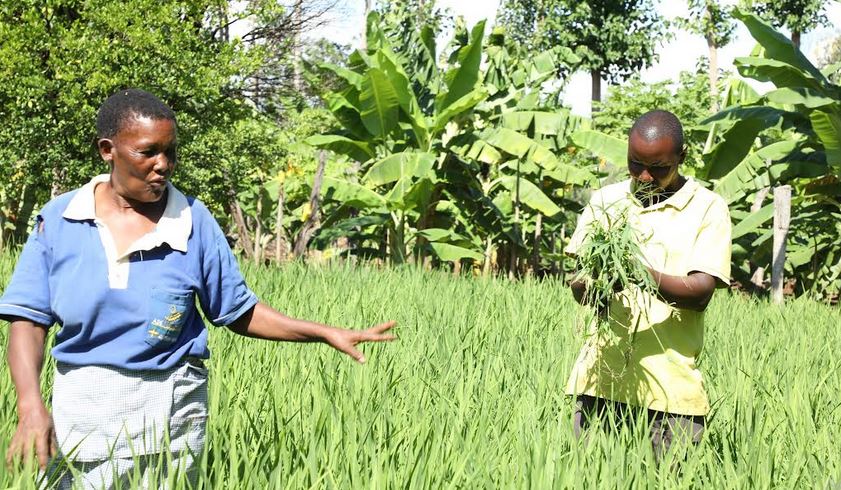The government has been collaborating in a public-private sector partnership with the support of development partners to revive irrigation schemes and enhance upland rice products.
Rice is the third most important staple crop in Kenya after maize and wheat and is grown in 23 counties in the country, with the government’s National Rice Development Strategy of 2019–2030 gearing towards self-sufficiency and increasing paddy rice from 156,000 MT in 2018 to 1,301,000 MT by 2030.
Last year, the country spent Sh54.7 billion to import 937,098.5 metric tonnes of rice in order to plug the rice deficit.
In view of this, a joint initiative between Kilimo Trust, the Kenya Agriculture and Livestock Research Organisation (KALRO), and Egerton University has seen the adoption of high-yielding upland rice varieties quickly take root in Meru, Embu, and Tharaka Nithi Counties.
Designed to thrive under rain-fed conditions, the adoption of the rice varieties has helped increase the incomes of small-scale farmers and promote sustainable agricultural practices.
Dr. Birungi Korutaro Kilimo Trust Chief Executive Officer says that upland rice farming is an important initiative in attaining the goal of rice sufficiency not only in Kenya but across Africa.
“The adoption of upland rice farming in East Africa marks a significant step towards achieving food security and mitigating the effects of climate change in the region,” Dr. Korutaro said.
He explained that by reducing dependence on imported rice, countries can lower their food import costs and strengthen their local economies.
“Our commitment to promoting upland rice farming aligns with our vision for a food-secure East Africa that is economically and environmentally sustainable,” Dr. Korutaro added
In the past two years, over 3,800 small-scale farmers in the region have received training, with more than 800 successfully adopting the drought-tolerant upland rice varieties, which are regarded as a potential solution to Kenya’s food security problem.
Grown on well-drained soils rather than flooded rice paddies, upland rice takes between three and four months to mature, and the cost of production is slightly lower when compared to lowland rice.
Prof. Paul Kimurto of Egerton University said that unlike paddy rice, upland rice also plays a crucial role in reducing greenhouse gas emissions as well as improving soil health by allowing easy incorporation of legumes as rotational crops by the farmers during the subsequent seasons.
“The upland rice can also be intercropped with other plants, making it suitable for small-scale rice farming,” Prof. Kimurto added.
Experts in the sector have said that intercropping upland rice, especially with forage grasses, is a potential strategy for enhancing the sustainability of agriculture in the tropical region by increasing food production as well as land use per unit area.
Simon Mbai, a farmer in the Nkui area of Meru County, says the introduction of new varieties has been a game-changer for them, as most of them have switched from maize to rice farming.
“My income has nearly doubled, and every day more farmers are coming to ask me to teach them about these rice varieties,” he added.
Beyond the economic benefits, the adoption of the crop has also ensured a stable food supply for their families and improved overall nutrition.
“Our daily diet has always revolved around maize because rice is expensive in the market. With rice, we have both an alternative staple and a cash crop,” Adelina Munyua, another farmer in Meru, added.
The upland rice initiative is part of Kilimo Trust’s Reduce, Reuse, Recycle Rice Initiative for Climate Smart Agriculture (R4iCSA), which aims to increase production and promote sustainable rice production practices among 10,000 smallholder rice farmers in Kenya and Uganda in order to mitigate the effects of climate change.
Funded by the IKEA Foundation, the R4iCSA project is in line with both the Kenya National Rice Development Strategy (KNRDS 2019–2030) and the East African Community’s (EAC) partner states’ EAC Rice Development Strategy (ERDS), which seeks to boost rice production and reduce reliance on imports, all while tackling climate change.
Last year, KALRO released a total of nine improved rice varieties for both upland and lowland agro-ecologies.
Rice consumption in Kenya is increasing rapidly, driven by changing consumer habits, especially by the growing urban population in the country. According to the Kenya National Bureau of Statistics (KNBS), annual rice consumption in Kenya is estimated to be over one million metric tonnes, while the production capacity is approximately 230,000 metric tonnes.
By Wangari Ndirangu





